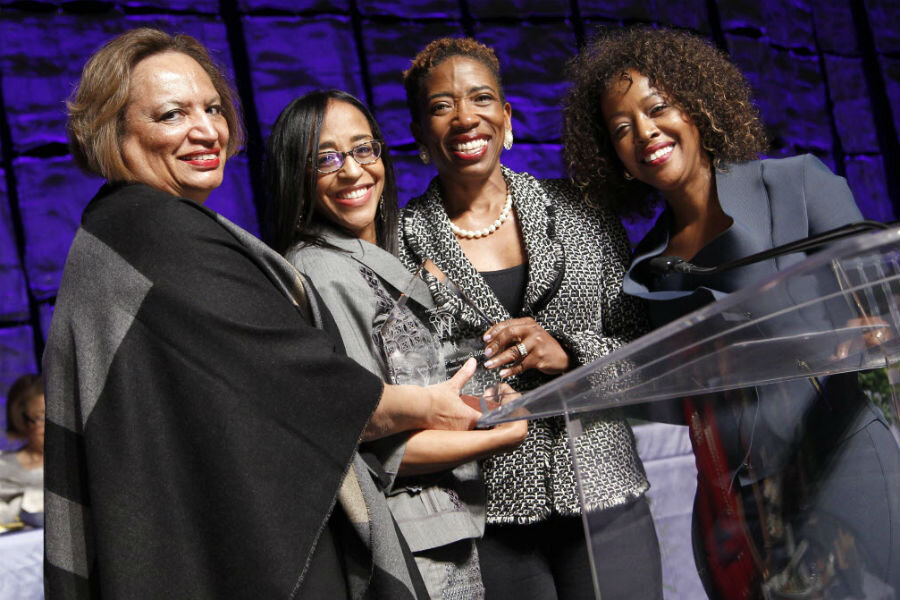Tuesday marks African-American Women's Equal Pay Day
Loading...
African-American Women's Equal Pay Day falls on Tuesday, Aug. 23 this year, marking the amount of time it took for black women to earn as much as white men did in 2015: one year, seven months, and 23 days.
The holiday comes more than four months after the better-known Equal Pay Day, which demonstrates how far into the year women in general must work to catch up to the earnings of men. The much-debated gender wage gap, which currently stands at 79 cents for every male-earned dollar, is frequently cited by income equality advocates. However, that gap grows significantly larger when race is factored into the equation: African-American women working full time, year round earn 60 cents for every dollar paid to white, non-Hispanic men, according to a report published Tuesday by the Center for American Progress.
While the day is a sobering reminder of just how far the United States has to go in its quest for gender and racial parity, advocates hope that the attention generated by the holiday could prompt further change.
Women in business have undeniably made significant strides in recent decades, but when it comes to the wage gap experienced by women of color, "the progress is still way too slow," says Jocelyn Frye, a senior fellow at the Center for American Progress and co-author of the report. And, she adds, "I think everybody would agree that there's still a lot of progress needed."
Ms. Frye attributes the large disparity in pay to two primary factors. For one, women, particularly African-American women and Latinas, are disproportionately concentrated in minimum wage jobs, she tells The Christian Science Monitor in a phone interview. Nearly half of low-wage female workers are women of color, with 27.7 percent of African-American women working in service occupations.
The other main cause, Frye and other experts say, has less to do with the wages themselves and more to do with the workplace protections women of color have access to – or rather, don't have access to. For example, African-American women, when compared with white women, are less likely to have access to flexible work days, flexible work hours, and paid sick time.
The lack of flexibility and other workplace protections can be especially problematic for black mothers, more than half of whom are the breadwinners for their families. As the Christian Science Monitor's Cristina Maza reported last year:
Inflexible hours, a lack of paid maternity leave, an emphasis on overtime and face-time with the boss, and a lack of affordable childcare, can make it difficult for the 80 percent of women who will become mothers by the age of 44 to balance their family life with their jobs, economists and equal pay advocates say.
Moreover, working mothers often pay a 'motherhood penalty' that researchers say stems from a, perhaps subconscious, belief that mothers are less dedicated to their jobs and less efficient. This means that working mothers make 7 to 14 percent less than women without children, and often find it more difficult to get back into the workforce after taking time off. Meanwhile, men's incomes tend to increase as they have more children. Part of this phenomenon could be because mothers choose to take time off or reduce their hours after having a baby. But critics point out that women often make these choices because their employers don’t compensate them enough to cover the exorbitant price of childcare, or provide them with the flexibility they need.
Women of color in particular "are hard hit by a kind of perfect – and perfectly devastating – storm caused by discrimination, a struggling economy and the country's failure to adopt family friendly workplace policies," said Debra L. Ness, president of the National Partnership for Women & Families, in 2013, as reported by The Huffington Post. The numbers, she said, "show that the wage gap is costing women of color thousands of dollars in critical income each year that could be spent on food, rent, health care and on meeting other fundamental needs for their families."
Though the progress may be slow, the issue has begun to gain traction on both the corporate and state levels as equal pay consistently polls as a top priority for both men and women, Frye says. As a result, "we've seen enormous efforts ... to try to both ensure that people are paid fairly for their work, and also to close the gap."
A number of companies have taken steps to ensure equal pay, using various strategies. Some, including Apple and other large tech companies, have become more transparent about how they pay their male and female employees. Others have begun to eliminate practices such as salary negotiations to avoid wide disparities in pay. And paid parental leave is on the rise, with at least 15 large companies, ranging from Goldman Sachs to Netflix, increasing paternity leave or gender-neutral, paid parental leave programs since 2015.
Meanwhile, Frye says, state-level lawmakers have begun to crack down on unequal pay. As an example she cites a new pay law in Massachusetts, which passed earlier this month, that promotes salary transparency, prohibits employers from asking applicants about previous salary history, and offers legal incentives to companies that conduct salary reviews.
Now, in the midst of an election year, some equal pay advocates are optimistic that the issue could continue to draw attention and prompt action.
"This economic reality alone is reason enough for policymakers to prioritize closing this staggering pay gap. But it is also an election year, and the votes of black women are coveted," writes Fatima Goss Graves, senior vice president for program at the National Women's Law Center, in a US News & World Report editorial. "Now may indeed be the time when equal pay can finally take center stage with a particular focus on equal pay for black women."






